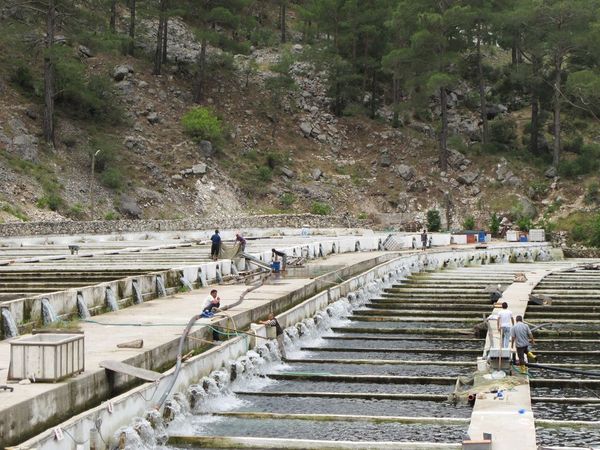Aquaculture

Aquaculture is the farming of aquatic organisms like fish, crustaceans, molluscs and aquatic plants in artificial systems, coastal and inland waters. Aquaculture involves the intervention in the rearing process to enhance production. In contrast to capture fisheries, the stock being cultivated is under individual or corporate ownership. The global demand for fish and seafood has been increasing rapidly throughout the last decade. Capture fisheries production, however, continuous to remain stable. Aquaculture is thus getting more and more important as substantial increases in global fish production can only be achieved by farming. At present, more than 50% of fish and seafood for human consumption are derived from aquaculture. Indeed, the expansion of aquaculture gave rise to several questions, e.g. in the fields of technology, ecology as well as in socioeconomics. With our research, we want to contribute in solving these questions making aquaculture sustainable.
Publications
- 0
Salehi H, Reiser S, Focken U (2025) Assessment of the nutritional and effluent properties of potential fish-meal-free diets for rainbow trout (Oncorhynchus mykiss W.) in Iran. Aquaculture Int 33(3):165, DOI:10.1007/s10499-025-01841-z
- 1
Dahlke FT, Focken U (2025) Duale Flächennutzung durch Aquakultur und Photovoltaik in Vietnam . Bremerhaven: Thünen-Institut für Fischereiökologie, 2 p, Project Brief Thünen Inst 2024/04, DOI:10.3220/PB1706615529000
- 2
Ellrich JA, Kozian-Fleck C, Brand M, Colsoul B, Pogoda B (2025) Ecological reef restoration: consumptive and nonconsumptive interactions among common North Sea predators and European oysters. Front Environ Sci 13:1509318, DOI:10.3389/fenvs.2025.1509318
- 3
Salehi H, Reiser S, Pourkazemi M, Focken U (2024) Complete replacement of fish meal with potential aquafeed ingredients for rainbow trout in Iran. Turk J Fish & Aquat Sci 24(3):TRJFAS24254, DOI:10.4194/TRJFAS24254
- 4
Dahlke FT, Focken U (2024) Dual Land Use by Aquaculture and Photovoltaics in Vietnam . Bremerhaven: Thünen Institute of Fisheries Ecology, 2 p, Project Brief Thünen Inst 2025/04a, DOI:10.3220/PB1706619714000

![[Translate to English:] [Translate to English:]](/media/_processed_/2/9/csm_Embryo-Exp_Gelege_9F_dpf5-200513111619_c8534a8199.jpg)
![[Translate to English:] [Translate to English:]](/media/_processed_/2/9/csm_Embryo-Exp_Gelege_9F_dpf5-200513111619_9027994d44.jpg)






